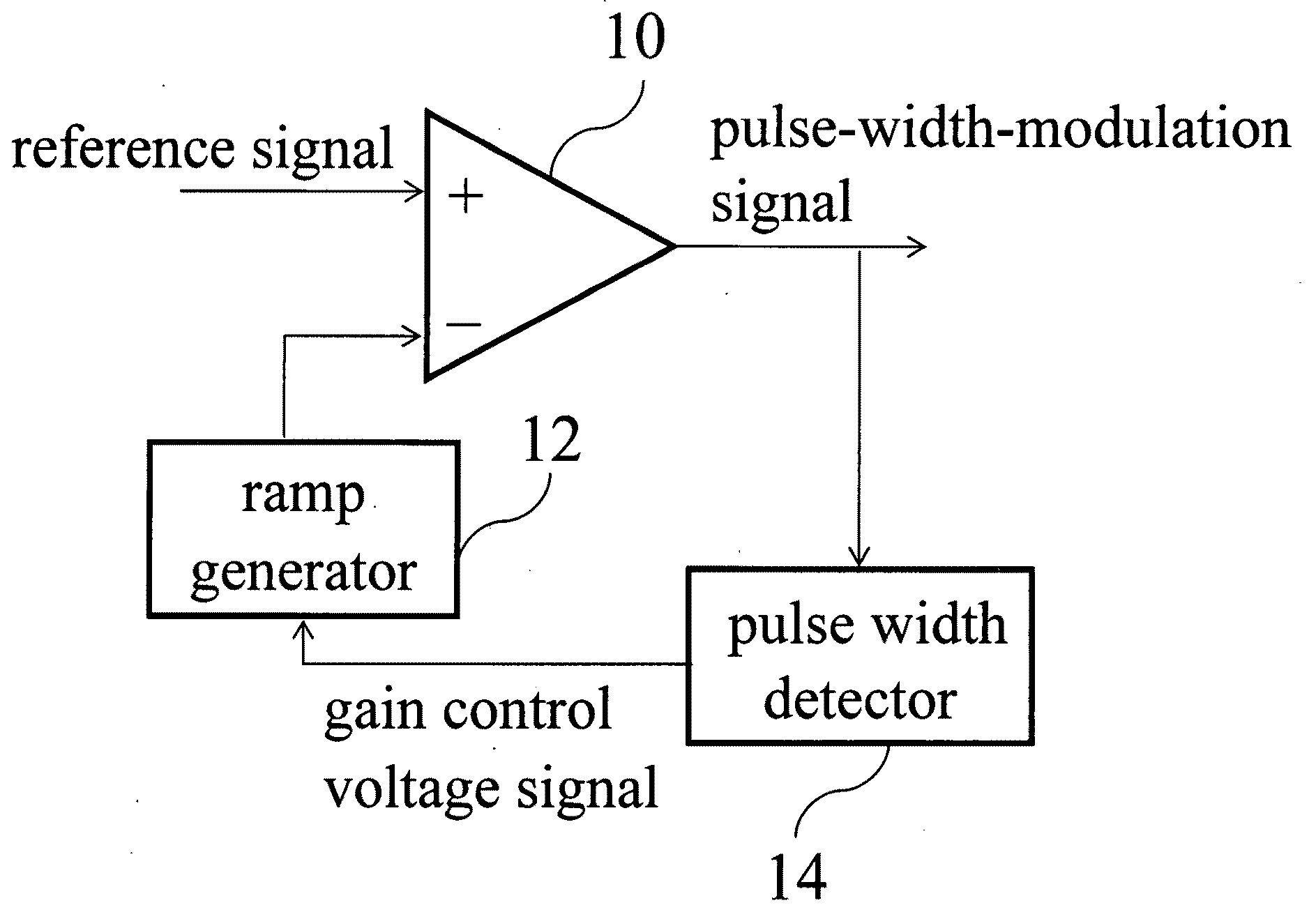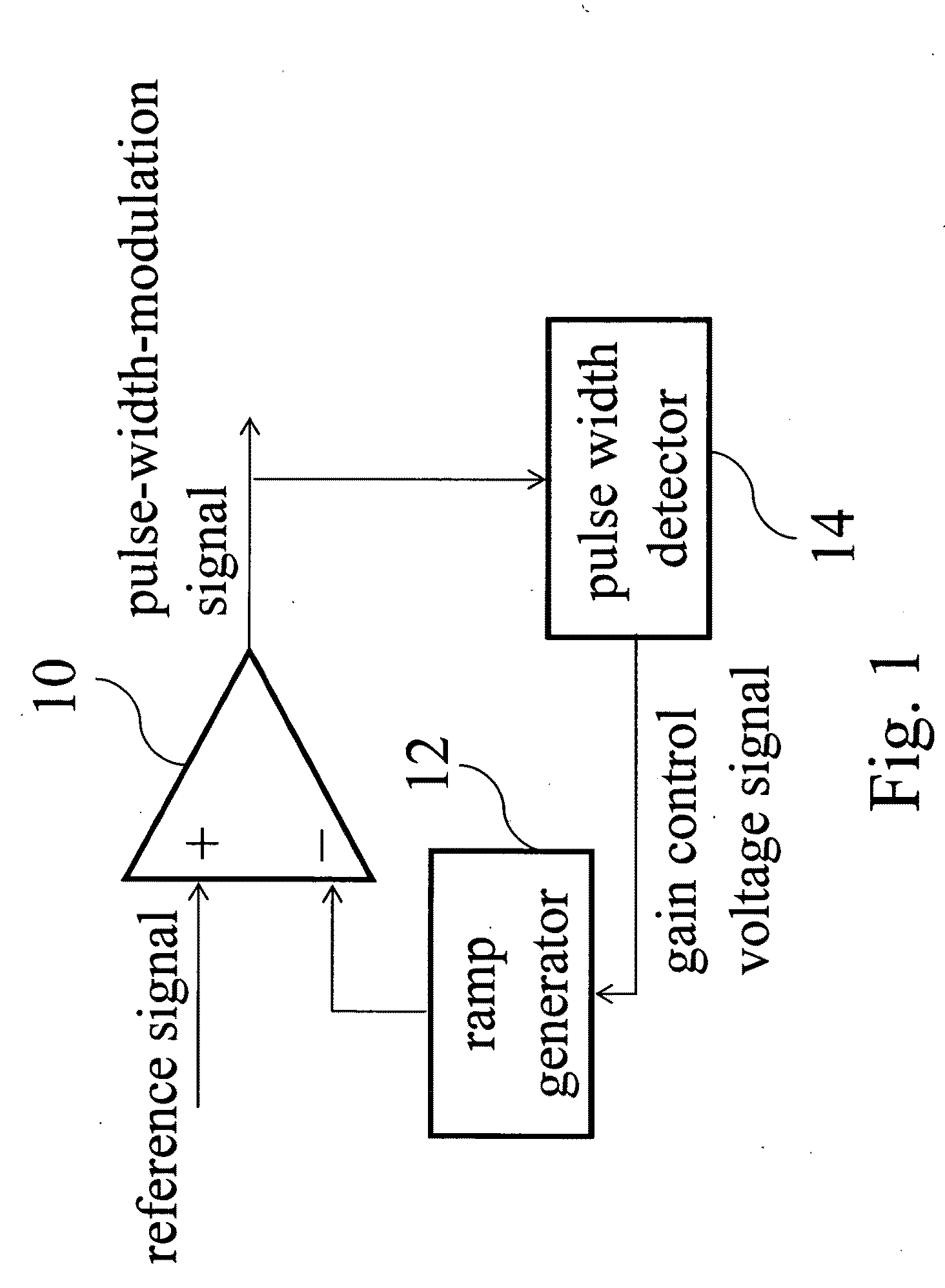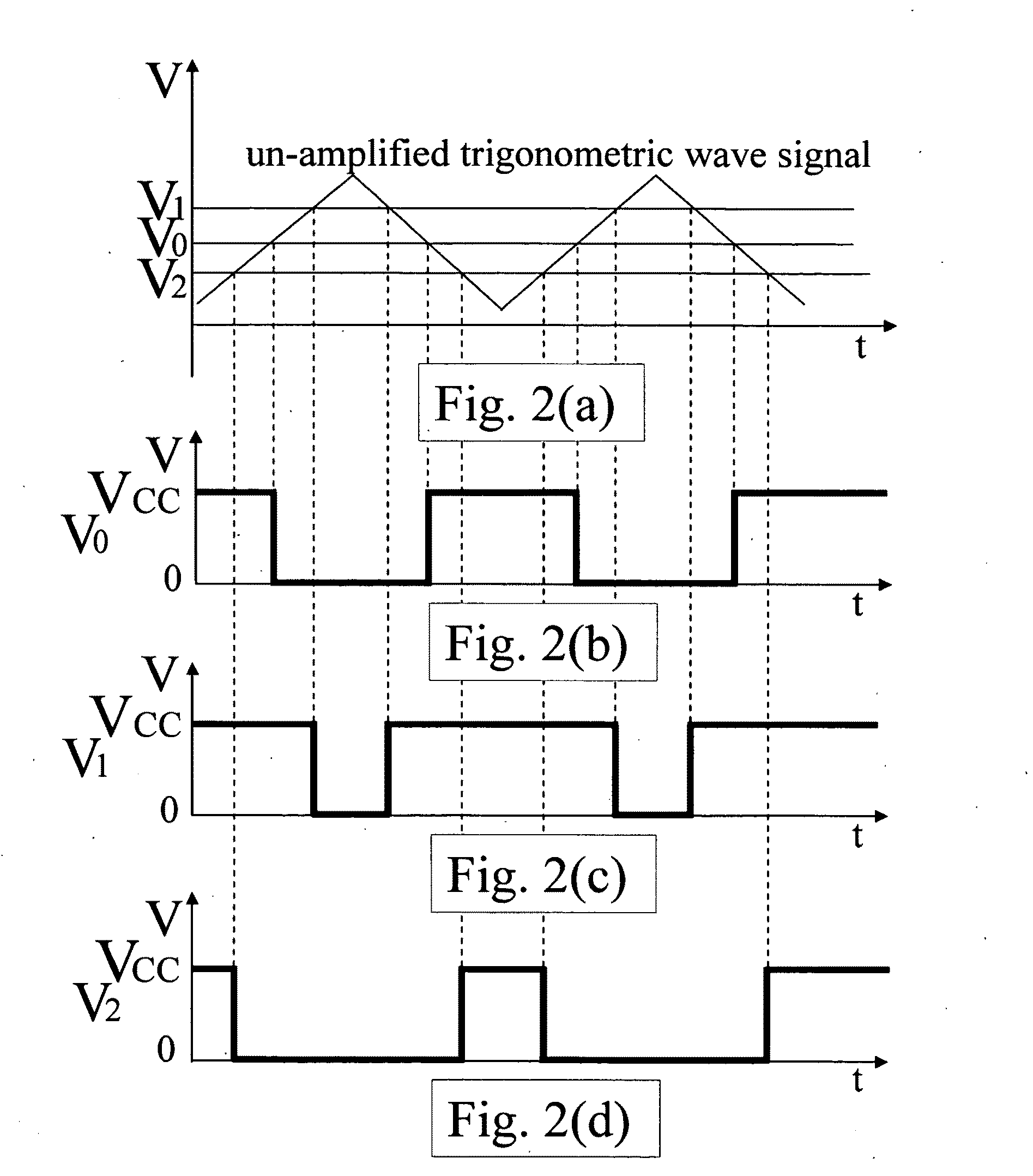Output-level-controlling converter device
a converter device and output level technology, applied in the direction of gain control, transducer casing/cabinet/support, electrical transducer, etc., can solve the problems of high signal distortion, unexpected and exceedingly high voltage of audio frequency power amplifiers, and excessively large signal output power, so as to reduce the distortion of saturation output signal, reduce the voltage gain of reference signal, and reduce the output power
- Summary
- Abstract
- Description
- Claims
- Application Information
AI Technical Summary
Benefits of technology
Problems solved by technology
Method used
Image
Examples
Embodiment Construction
[0018]The purpose, construction, features, functions and advantages of the present invention can be appreciated and understood more thoroughly through the following detailed descriptions with reference to the attached drawings.
[0019]In order to eliminate or at least alleviate the phenomenon that an audio frequency power amplifier tends to produce serious signal distortion when receiving an input signal of exceedingly high voltage, the present invention discloses an output-level-controlling converter device, that can be utilized in performing signal conversion digitally for an ordinary audio frequency power amplifier. Referring to FIG. 1 for a schematic diagram of an output-level-controlling converter device according to a first embodiment of the present invention. As shown in FIG. 1, the output-level-controlling converter device of the present invention includes an analog-to-PWM converter 10, having its negative input terminal connected to a ramp generator 12, and that is used to ge...
PUM
 Login to View More
Login to View More Abstract
Description
Claims
Application Information
 Login to View More
Login to View More - R&D
- Intellectual Property
- Life Sciences
- Materials
- Tech Scout
- Unparalleled Data Quality
- Higher Quality Content
- 60% Fewer Hallucinations
Browse by: Latest US Patents, China's latest patents, Technical Efficacy Thesaurus, Application Domain, Technology Topic, Popular Technical Reports.
© 2025 PatSnap. All rights reserved.Legal|Privacy policy|Modern Slavery Act Transparency Statement|Sitemap|About US| Contact US: help@patsnap.com



